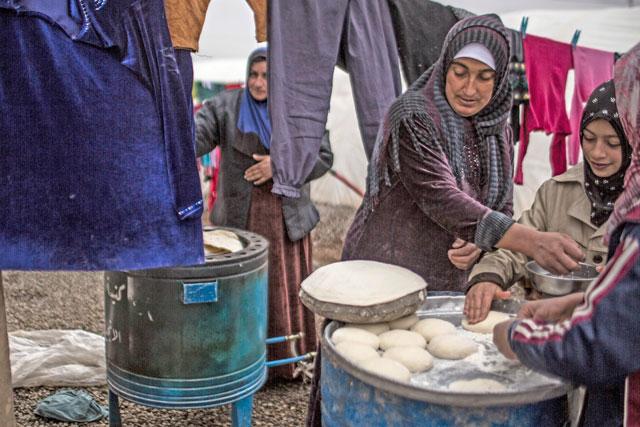SINGAPORE — Russia and Iraq are boosting crude shipments to a Chinese market where oil demand is growing at its slowest in more than 20 years, forcing rival suppliers to divert cargoes elsewhere.
The redirected shipments from Latin America, Africa and some Middle Eastern producers that were originally expected to go to Chinese refineries will drag on benchmark prices this year, and state oil companies have already started cutting official selling prices in their search for buyers.
Russia’s Rosneft, backed by its government to push East Siberian oil to Asia, and Iraq, armed with big discounts and easy terms, have landed contracts that will raise their combined shipments nearly 50 per cent more than China’s import demand is forecast to grow in 2014.
With state refiner PetroChina and oil major BP Plc. also delaying or dropping refinery projects in China due to worries about demand growth, sellers will be scrambling for shares in a market smaller than they had anticipated.
“Lots of people all around the world want to sell crude to Asia, and there may not be enough demand for everyone,” said Andrew Reed at Energy Security Analysis Inc.
China’s oil demand rose just 1.6 per cent last year, its slowest pace since 1992. Its crude imports grew 4 per cent, their slowest since at least 2007, according to Reuters data, and down from a rise of more than 17 per cent in 2010.
Although top China oil company China National Petroleum Corp. (CNPC) has said the nation’s crude imports will rise 7.1 per cent this year, or about 370,000 barrels per day (bpd), the bumps in Russian and Iraqi supplies would more than match that increase.
Russia’s biggest oil producer Rosneft, which supplied over 300,000 bpd to China in 2013, will ship an additional 180,000 bpd this year, with China-bound exports eventually to rise to more than 900,000 bpd.
“It’s a logical move. Russia is simply trying to secure a long-term offtaker of its crude,” Reed said.
As Iraq pushes hard to raise its market share in China and Asia, it is set to become China’s second-largest crude supplier this year by increasing shipments by 68 per cent to 882,000 bpd.
Last year, Iraq passed Iran to become China’s fifth-largest supplier after cutting its official selling prices for its main crude Basra Light.
Fight for share
China’s increased imports from Russia and Iraq only intensifies the fight for Asian market share among other oil exporters.
Producers in Latin America and Africa are already offering steeper discounts to Asian buyers as import needs in their traditional US and European markets drop.
“As the Atlantic basin needs less and less oil, crude from Latin America, Africa and Russia will have to find a new home,” said Jeff Brown of FG Energy. “Naturally they’re looking to Asia.”
This prospect of oversupply and ongoing slow growth in China prompted investment banks such as Goldman Sachs and Barclays in December to lower their oil price forecasts for 2014.
Dutch bank ABN AMRO in January cut its average Brent price for this year to $95 a barrel from $100.
“Oil oversupply is here to stay, at least in the next few years, outpacing the rise in demand and thus keeping oil prices under pressure,” it indicated in a research note.
This month, however, the International Energy Agency (IEA) became the third major forecaster to say that global oil use would be higher than expected this year due to economic growth in the United States and Europe.
Oil inventories are also at their lowest since 2008 because of stronger-than-expected demand and supply problems in some members of the Organisation of Petroleum Exporting Countries (OPEC), the IEA said.
Still, the bump in supplies to China from Russia and Iraq look especially bad for Latin American exporters, who had been looking to Asia as surging US shale oil output robs them of decades-old customers.
By the end of the first quarter, shipments of Latin American crude to China are likely to have fallen by 10 per cent from a year earlier to around 504,300 bpd, according to data compiled by Thomson Reuters. Compared with the first quarter of 2012, that volume would mark a fall of about 25 per cent.
Latin American producers deliver a set volume of crude and products to China under annual deals, and Chinese companies sometimes launch tenders to resell a portion of them, after factoring in domestic requirements.
“If China’s oil demand slows down, re-sales of Venezuelan and Ecuadorian crude and products will increase,” said a trader working in a private firm and involved in PetroChina’s sales.
All Ecuadorian fuel oil being delivered by Petroecuador to PetroChina, some 100,000 bpd, is currently being resold by PetroChina, and it also frequently resells crude and different Venezuelan refined products, the trader said.
Shipments of West African grades to China are also likely to fall in January and February versus a record in November, although it is too early to say if the drop reflects a decline in China’s appetite for the crudes.












